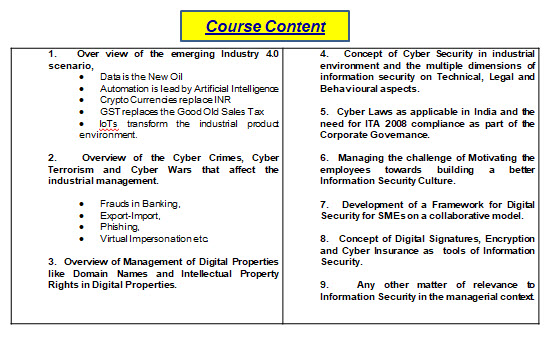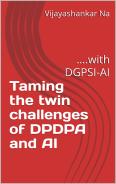After the PNB Fraud in which over Rs 11400 crores are suspected to have been lost came to light, many other frauds are slowly tumbling out the closets of E Banking.
Leaving aside the fact that the lenders of different Banks who lent money to Mr Nirav Modi and Mehul Chokshi failed to check the “End Use” of funds and allowed renewal of LOUs without checking the previous utilization and need for extension, it was also realised that PNB had even allowed the Nirav Modi employees to directly access the SWIFT messaging system of the Bank.
The system of the Bank was so configured that SWIFT system could be accessed from outside the banking network. The operating officials of the Bank gave away passwords of multiple officials to the Nirav Fraud team.
The system had no control that could detect that the log in was from outside the Bank’s network, multiple passwords were entered from the same computer and the messages did not reflect in the CBS system, nor created vouchers for commission or margin collection.
This was a gross failure of the Bank staff and the information security configuration of the systems.
It is true that any IS control can be defeated if the employees are dishonest. But still, the system design should be such that even if some of the employees are dishonest, the fraud should be detected, if not for the first time, in subsequent times.
Unfortunately the creators of the software in Infosys who sell FINACLE and supply it to a number of Indian Banks, are not aware of the intricacies of Banking transactions and how frauds could be committed. Hence their design is a faulty design and Banks are saddled with this defective product.
Now yet another fraud has come to the open in State Bank of India, Chennai where also it appears that the passwords of the Bank staff has been used by an outsider to divert over Rs 3.2 crores of money (Refer article here) meant for purchase of Cars as an unsecured cash advance which was used for funding a Film production. Here again, the security configurations of the CBS software has failed to recognize that Cars were not purchased, money was not credited to a Car dealer’s account, documents such as RC book etc was not submitted, asset inspection did not take place etc.
In all such cases, it is clear that it is not only the Software that failed, but also the internal audit system.
It is high time that Indian Banks rethink on how their “Internal Auditors” are equipped to conduct audits in the Computerized environment.
If internal audit cannot identify this new generation of Bank frauds where the customer himself is given access to the Bank’s systems to design his own loan sanctions, create approvals of several layers of bank officers and take the money out, then there is no need for such audits.
Where such “Self Loans” are used in the “Kite Flying Mode” and repaid with a roll over loan, it is very difficult for normal audit processes to find out the anomaly. There is definitely a need for Computer Assisted Audit techniques either with in built features of the core banking software or through specialised audit tools.
FINACLE Strengths and Weaknesses
The Banking software like FINACLE which costs a fortune for the Banks should have an inbuilt, non-tamperable audit module that should be effective in preventing such frauds to continue beyond the first couple of occurrences if not the first time.
FINACLE boasts of an Audit module as part of its system but it is clear that it has failed in the context of not only PNB Brady Branch but also SBI Chennai branch and in the many other similar cases that have come to light now.
If the Indian Banking system is in doldrums today, a large part of that responsibility should be boarne by the CBS software suppliers who have supplied defective products to the industry.
RBI has failed to subject the software itself to an audit of IDRBT which is mandatory and hence part of the responsibility for the use of defective software lies on the RBI also.
While checking on the Audit capabilities of FINACLE, I came across an article describing the audit capabilities of FINACLE.
Some key FINACLE menus and their use for an auditor has been described in this article. Some of them are briefly reproduced here.
- Account Leger Enquiry (ACLI)
- Customer Account Leger Print and Office Account Ledger Print (ACLPCA and ACLPOA)
- Audit File Inquiry (AFI)
- Average Balance (AVGBAL)
- BCREPORT
- Customer Master Inquiry (CUMI)
- Report on Expiring Documentary Credits (DCEXPLST)
- Query on Documentary Credit (DCQRY)
- Exception Report (EXCPRPT)
- Generate Report (GR)
- Financial Transaction Inquiry (FTI)
- Accounts Due for Review (ACDREV)
- Inward/Outware Remittance Maintenance (IRM/ORM)
- Outstanding Items Report (MSGOIRP)
- NPA Report (NPARPT)
- Letter of Acknowledgement of Debt Report (LADRPT)
- Loan Overdue Position Inquiry (LAOPI)/Ttemporary OD Report (TODRP)
- Print Reports (PR)
- Guarantee Issued Liability Register (GILR)
- Partywise Overdue Packing Credit (POVDPC)
The above list indicates that there should have been several reports that should have thrown up audit queries in respect of PNB Fraud as well as the SBI Fraud.
Now what we need to check is why did the discrepancies were not thrown up by the audits?
The reasons could be many.
- First reason could be that no audit was at all conducted. In PNB we are told that RBI did not audit the branch for more than 9 years. It is not clear if the internal audit was also bypassed. If so was there any declaration in the annual reports to the share holders providing the list of branches which were not audited for the last 1/2/3 or more years?
- If an audit was conducted, it is possible that the auditors were not aware of all these modules andhow to use them appropriately
- Perhaps there was lack of adequate training of the auditors.
- It is also possible that FINACLE comes with some base module that does not include all features and a higher priced module that may include additional modules and the Bank could have not taken the full module for cost considerations.
- It is also possible that the FINACLE system itself might not be able to properly analyze the data in the above modules though it may create some printable reports.
Need for Data Analytics in Audit process
Computer Assisted Audit Techniques that are essential for proper auditing of any Computerized data environment requires a capability to
a) Acquire data of different types from across the network available in different platforms and collate it into a common platform for analysis
b) Extract, Classify and Re-classify data into different groups which create new meanings not visible in the direct report
c) Search data across multiple categories and filter them against some specific risk identifying algorithms
d) Use known statistical methods such as Benford law to check on potential frauds
e) Use Forensic audit tools to discover evidence that has been buried by the fraudsters
f) Use “Checking of Controls” as a part of the audit including the Information Security controls such as “Access Control”, “Log Analysis”, “Incident Management System” etc.
It is clear that the current Internal Audit process in Banks is not equipped to conduct an audit outside what reports are submitted by the Branch to the auditor. If the Auditor audits only what the auditee wants him to see, then the value of such audit is low. Perhaps it is what statutory auditors do. But Internal auditors have to go beyond checking the arithmetic accuracy of the transactions and go into an in-depth fraud possibility analysis.
Cost and Training Hurdle
In examining the solutions that the Auditors could use, it was observed that the tools normally considered as reputed “Computer Assisted Audit Tools” or CAATs are prohibitively expensive and require a rigorous training both of which seem to create a hurdle for Banks.
However, it is possible for RBI to equip itself with such tools (ACL, IDEA, ARBUTUS etc) and use it in its audit as a starting point. Other Banks may start using it depending on their size. Obviously the larger Banks donot have any constraint on budget nor ability to train the auditors, But smaller Banks may have a problem.
I therefore suggest that smaller Banks create a “Technology Resource Pool” in a “Centralized Fraud Investigation Center” which should be equipped with such tools and talent and conduct audits of member Banks as a service.
I hope RBI will take such steps to ensure that in future the audit system is strengthened to such an extent that the frauds such as what we are now seeing does not go undetected before it balloons into a huge scam.
Naavi
(P.S: I have been an ex-Banker and therefore may not be fully aware of the current situation in the Banks about how audits are conducted in the Computerised environment.
But looking at the frauds that are surfacing, it is clear that the system is not working properly and hence some of the observations made above may be true though I may not be able to give evidence of the same. If we want to clean up the Bank system, Bankers need to do a self evaluation of their systems and check if some of the points made here are relevant or not.
I invite comments and suggestions on how to improve Audit systems in Banks in the computerized environment… Naavi)







